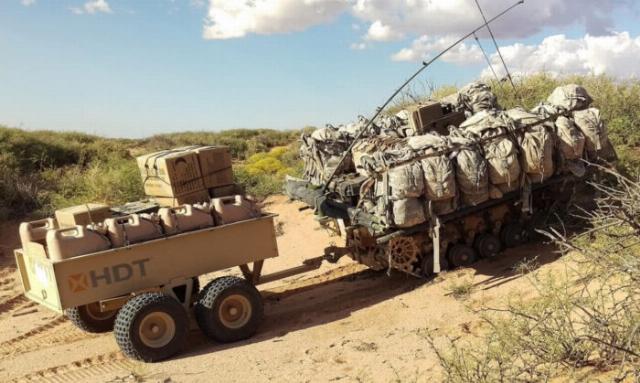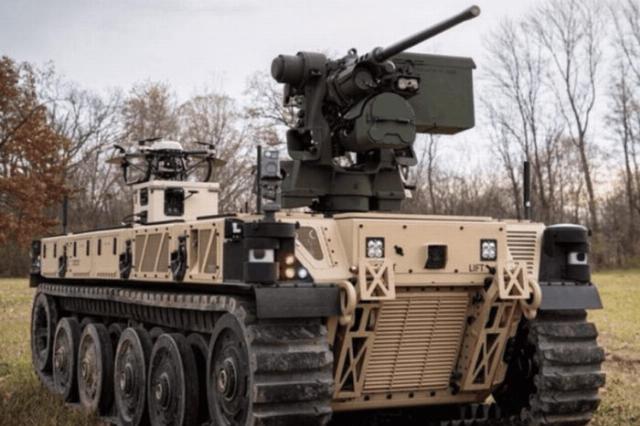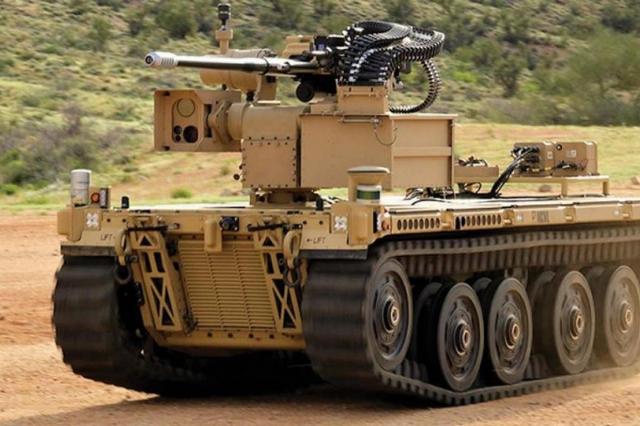Although the US Army has many years of experience using small robots in tasks such as explosive ordnance disposal (EOD), as the program for creating combat robotic vehicles progresses, it becomes necessary to provide soldiers with the opportunity to operate and fight side by side with large armed uninhabited ground systems, as well as train the algorithms of such systems to function in frontline conditions.
After many years of laboratory and field experiments, as well as some experience operating various robotic platforms, the U.S. Army is advancing an analysis process known as DOTMLPF-P (Doctrine, Organization, Training, Materiel, Leadership and Education, Personnel, Equipment and Policy) for its future Robotic Combat Vehicles (RCV). One of the relatively new aspects of the process is RCV training.
Representatives of the service acknowledged that the army had been experimenting with robotic machines for decades, and the most recent programs involved smaller systems that were focused on EOD neutralization tasks.
It was only in the last decade that work began on larger uninhabited vehicles, such as the Autonomous Tactical Vehicle System (ATV-S), the Squad Multipurpose Equipment Transport (SMET) and its first combat platform under the RCV program.

Transport complex of the SMET detachment
Over the years, the army has conducted numerous exercises with personnel and operational experiments that included training operators and evaluating their skills before troops safely operated robotic vehicles. This training ranged from the safety level for specific test or experimental activities to full operator training conducted by certified army instructors.
In September 2023, the US Army signed agreements to create prototypes of combat robotic vehicles with companies such as McQ, Textron Systems, General Dynamics Land Systems and Oshkosh Defense. According to these contracts, by August 2024, each of the four laureates must create and deliver two prototypes of the platform for extended testing. Long-term plans involve "making a final decision on RCV" in February 2027, when the army will be able to make a decision on production and move to field testing in 2028.
Meanwhile, recent experiments and training have focused on RCV–Light (RCV(L)) "surrogate" platforms.
The next important step is being taken at the National Training Center (NTC) in Fort Irwin, California. The event, under the code "Pilot 24" ("Pilot 24"), will last until September and involves the use of surrogate platforms by the 2-11 armored cavalry regiment ("Blackhorse"), the traditional "opposing force" ("opposing force", OPFOR) from the NTC, as well as additional personnel from the US Army Command on the continental part.
It is expected that the event, which will cover two rotations of military personnel from different combat groups of the Armored Brigade (ABCT), will provide the army with additional information on how OPFOR could use robotic surrogates against the "blue forces", as well as how these "blue forces" could use RCVS against OPFOR.
The planners note that the experiment will support the army's need to solve technical and operational training tasks, ultimately continuing to inform about the consequences of the introduction of robotic and autonomous systems in the field. The reports should be supported by the collection of initial feedback from soldiers to determine the priorities of the program for the development of robotic capabilities.

RCV-L surrogates are used to collect data during the "Pilot 24"
According to representatives of the US Army: "During Pilot 24, the army seeks to receive data through operational feedback on the DOTMLPF-P spectrum. This data will be based on lessons learned from previous operational experiments of soldiers or operators in order to continue to inform about the structure of forces, use cases, improve tactical application concepts, HMI [human-machine integration] capabilities in formation and much more."
The U.S. Army will also try to figure out how the addition of HMI to an armored formation affects gaps in ABCT capabilities during security, defense and intelligence operations.
When asked about the consequences of "robot training," military experts replied: "The training of our robots should be carried out both through simulation and through real-life experience, as a soldier would do. The advantage of robotic perception or software systems is that they work almost 24/7 without food and water in a DevSecOps environment [development, security and operations].
In these environments, algorithms for perceiving the environment, making deterministic and non-deterministic decisions, and classifying/labeling what they see will be trained. These robots will then be "washed and repeated" in the real world as they operate on the ground, receive commands and interact in full mission scenarios. Continuous learning is the name of the game for robotic vehicles."
In addition, it was noted that the training of operators for the first rotation of Pilot 24 covers both the mobility and the lethality of RCV platforms.
"The training consisted of multi-kilometer movement using a combination of automated escorting and remote control, as well as orientation in urban areas/cross-country walking and long-range network operations. The operators will also assess the qualifications of the crew, as well as artillery weapons."
After the completion of Pilot 24 at the end of September 2024, the US Army will take into account all lessons learned and feedback from participants in order to continue working in the DOTMLPF-P spectrum and, if necessary, take into account procurement requirements. The focus of future experiments is likely to shift to the Army Office of Rapid Capabilities and Critical Technologies Office (RCCTO) and larger human–machine integration initiatives (Human Machine Integration - Formation, HMI–F).
Based on the materials of the resource shephardmedia.com

